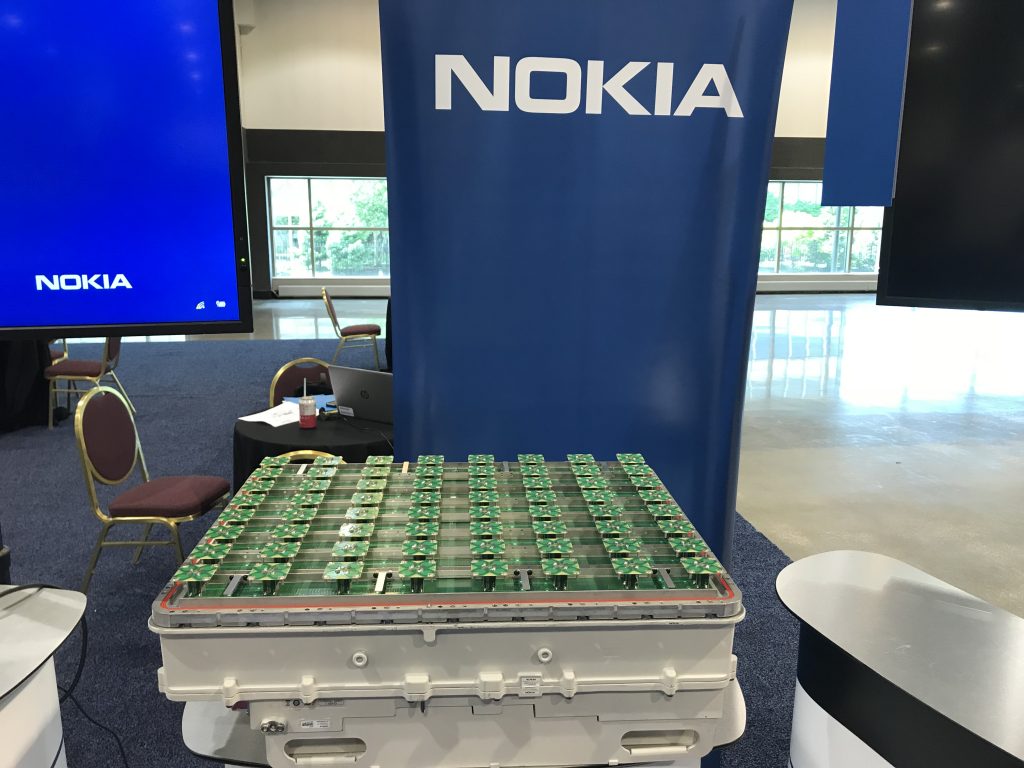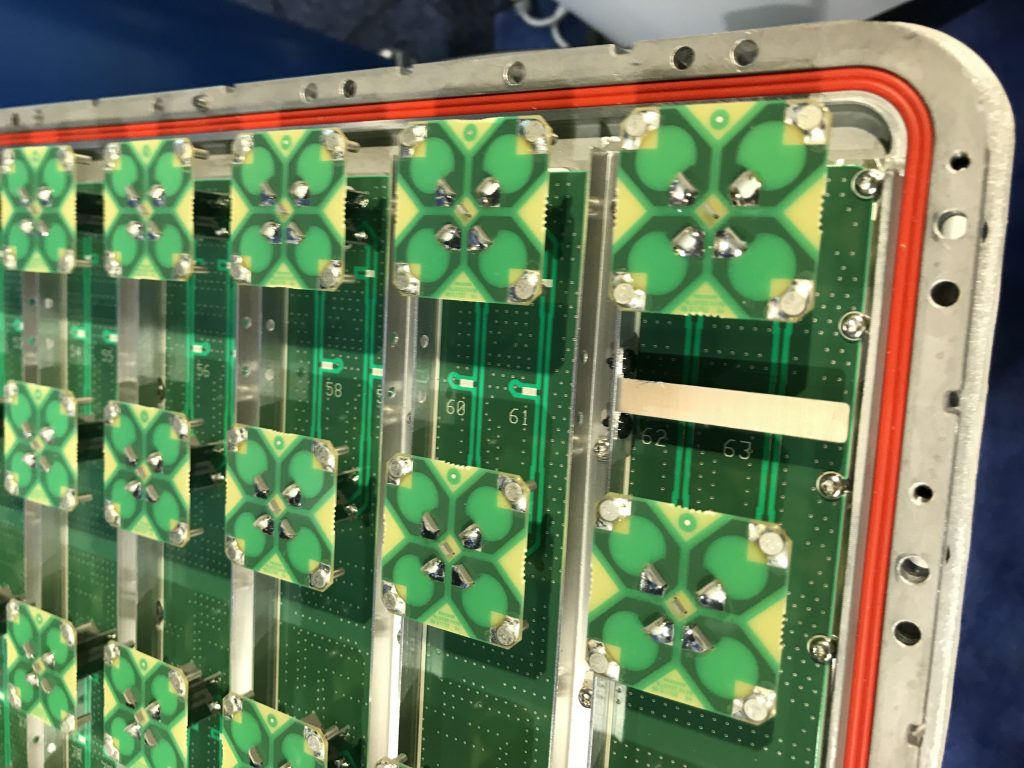Three massive-MIMO-related highlights from IEEE ICC in Kansas City, MO, USA, this week:
- J. H. Thompson from Qualcomm gave a keynote on 5G, relaying several important insights. He stressed the fundamental role of Massive MIMO, utilizing reciprocity (which in turn, of course, implies TDD). This is a message we have been preaching for years now, and it is reassuring to hear a main industry leader echo it at such an important event. He pointed to distributed Massive MIMO (that we know of as “cell-free massive MIMO“) as a forthcoming technology, not only because of the macro-diversity but also because of the improved channel rank it offers to multiple-antenna terminals. This new technology may enable AR/VR/XR, wireless connectivity in factories and much more… where conventional massive MIMO might not be sufficient.
- In the exhibition hall Nokia showcased a 64×2=128 Massive MIMO array, with fully digital transceiver chains, small dual-polarized path antennas, operating at 2.5 GHz and utilizing reciprocity – though it wasn’t clear exactly what algorithmic technology that went inside. (See photographs below.) Sprint already has deployed this product commercially, if I understood well, with an LTE TDD protocol. Ericsson had a similar product, but it was not opened, so difficult to tell exactly what the actual array looked like. The Nokia base station was only slightly larger, physically, than the flat-screen-base-station vision I have been talking about for many years now, and along the lines that T. Marzetta from Bell Labs had already back in 2006. Now that cellular Massive MIMO is a commercial reality… what should the research community do? Granted there are still lots of algorithmic innovation possible (and needed), but …. Cell-free massive MIMO with RF over fiber is the probably the obvious next step.
- T. Marzetta from NYU gave an industry distinguished talk, speculating about the future of wireless beyond Massive MIMO. What, if anything at all, could give us another 10x or 100x gain? A key point of the talk was that we have to go back to (wave propagation) physics and electromagnetics, a message that I very much subscribe to: the “y=Hx+w” models we typically use in information and communication theory are in many situations rather oversimplified. Speculations included the use of super-directivity, antenna coupling and more… It will be interesting to see where this leads, but at any rate, it is interesting fundamental physics.
There were also lots of other (non-Massive MIMO) interesting things: UAV connectivity, sparsity… and a great deal of questions and discussion on how machine learning could be leveraged, more about that at a later point in time.


